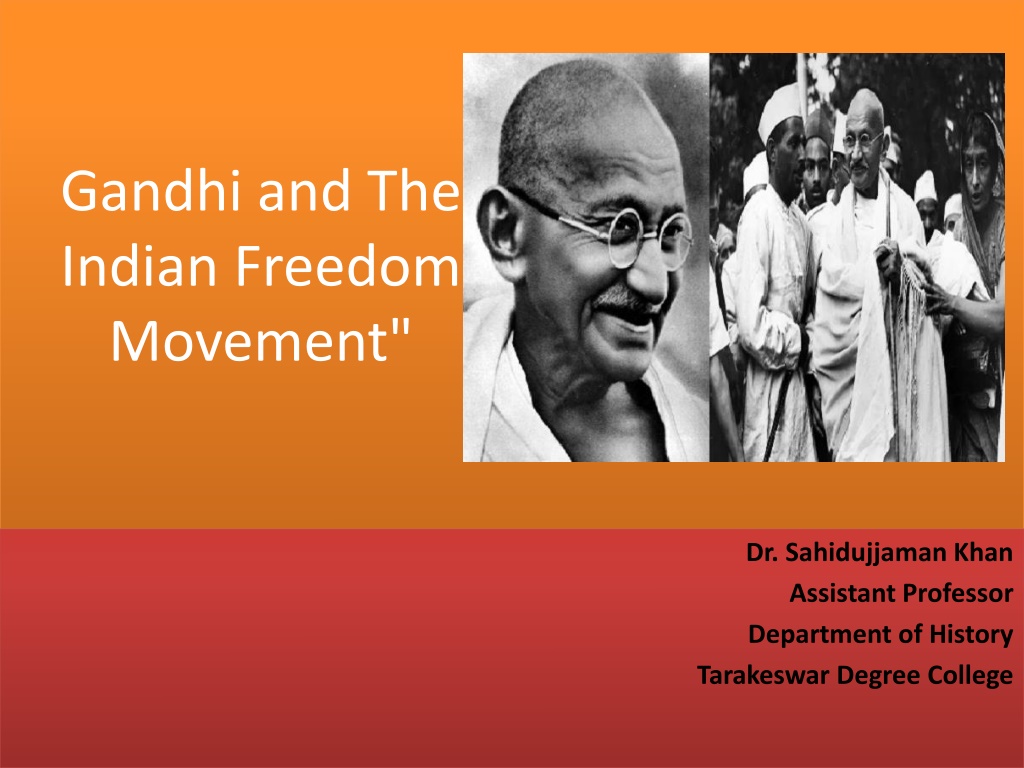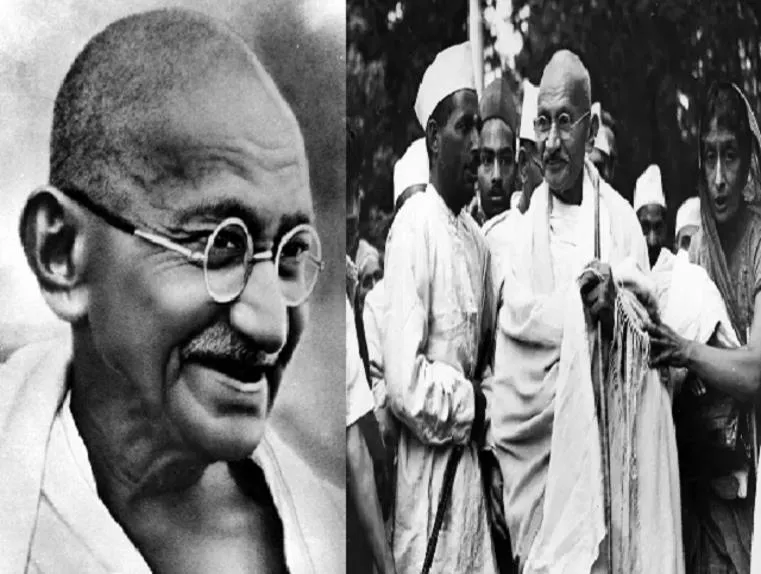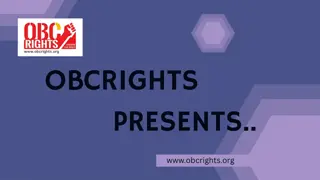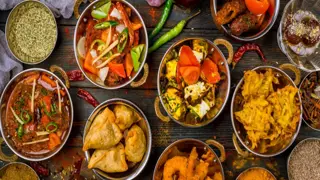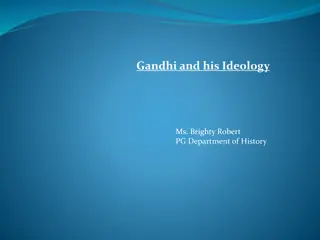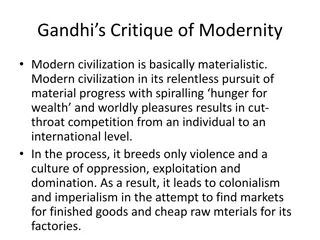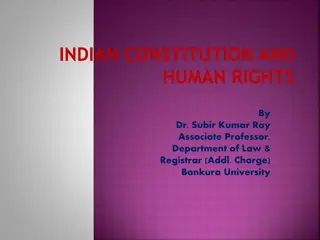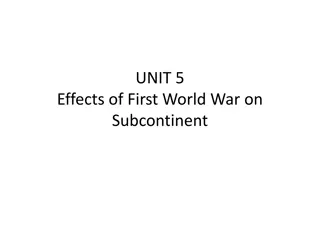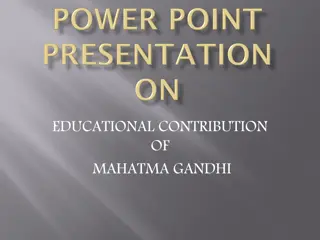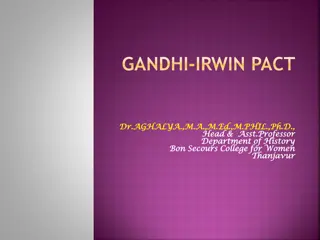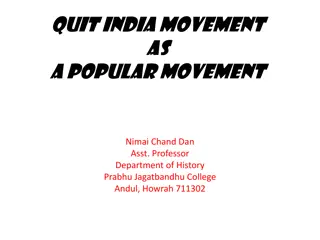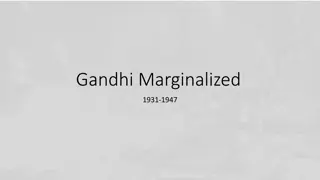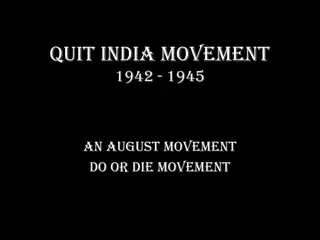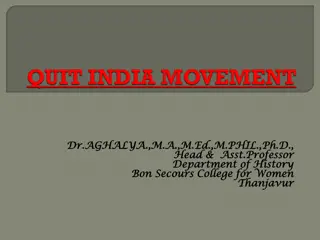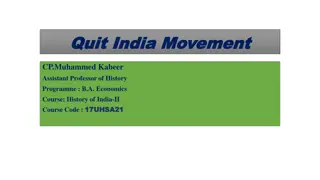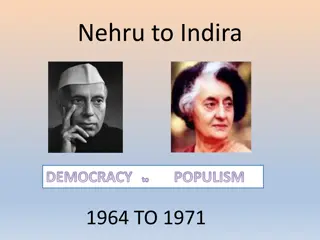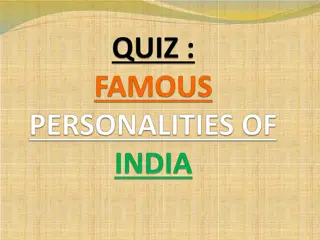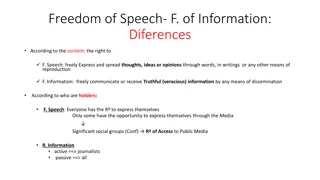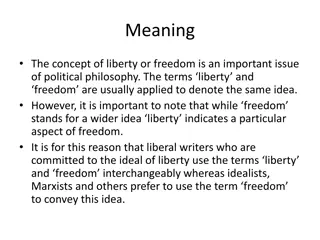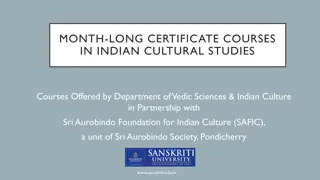Mahatma Gandhi and the Indian Freedom Movement
Mohandas Karamchand Gandhi, also known as Mahatma Gandhi, played a pivotal role in India's freedom movement with his philosophy of nonviolence and civil disobedience. Born in 1869 in Porbandar, Gujarat, Gandhi's experiences in South Africa and return to India in 1915 shaped his activism. He led movements like the Champaran Satyagraha, Noncooperation Movement, and the Salt March, all aimed at challenging British rule and advancing India towards independence.
Uploaded on Oct 02, 2024 | 0 Views
Download Presentation

Please find below an Image/Link to download the presentation.
The content on the website is provided AS IS for your information and personal use only. It may not be sold, licensed, or shared on other websites without obtaining consent from the author.If you encounter any issues during the download, it is possible that the publisher has removed the file from their server.
You are allowed to download the files provided on this website for personal or commercial use, subject to the condition that they are used lawfully. All files are the property of their respective owners.
The content on the website is provided AS IS for your information and personal use only. It may not be sold, licensed, or shared on other websites without obtaining consent from the author.
E N D
Presentation Transcript
Gandhi and The Indian Freedom Movement" Dr. Sahidujjaman Khan Assistant Professor Department of History Tarakeswar Degree College
Introduction Mohandas Karamchand Gandhi, also known as Mahatma Gandhi, played a pivotal role in India's freedom movement. His philosophy of nonviolence (ahimsa) and civil disobedience inspired became the guiding movement. millions and the principles of
Early Life and Influences Gandhi was born in 1869 in Porbandar, Gujarat, India. His family and upbringing, influenced by Jainism, instilled in him a strong sense of morality and spirituality.
Experience in South Africa Gandhi spent 20 years in South Africa, where he faced racial discrimination and fought for the rights of the Indian community. These experiences shaped his political consciousness and provided foundation for his future activism. the
Return to India Gandhi returned to India in 1915 and became actively involved in various social and political issues. He aimed to unite population and emphasized resistance as a means to achieve freedom. the diverse Indian nonviolent
Champaran Satyagraha The Champaran Satyagraha, launched in 1917, was one of Gandhi's first major movements in India. He fought for the rights of indigo farmers and successfully challenged the oppressive British landlords.
Noncooperation Movement The Noncooperation Movement was initiated by Gandhi in 1920 as a response to the Jallianwala Bagh massacre and other British injustices. It involved mass civil disobedience and boycotts of British institutions, aiming to weaken British rule.
Salt March The Salt March, also known as the Dandi March, took place in 1930 as a protest against the British salt tax. Gandhi and thousands of followers marched to the coastal village of Dandi, making salt from seawater in defiance of the law.
Quit India Movement The Quit India Movement was launched by Gandhi in 1942, demanding an end to British rule in India. It sparked widespread protests and civil disobedience, leading to mass arrests and repression by the British authorities.
India's Independence and Gandhi's Legacy India finally gained independence in 1947, but the struggle was not without sacrifices. Gandhi's leadership nonviolence played a crucial role in achieving freedom. He left a lasting legacy as a symbol of peaceful resistance, inspiring movements for freedom and human rights worldwide. and philosophy of
Conclusion Summarize the key points discussed in the presentation, highlighting Gandhi's leadership and his impact on the Indian freedom movement. Encourage further exploration of Gandhi's principles of nonviolence disobedience. and civil
